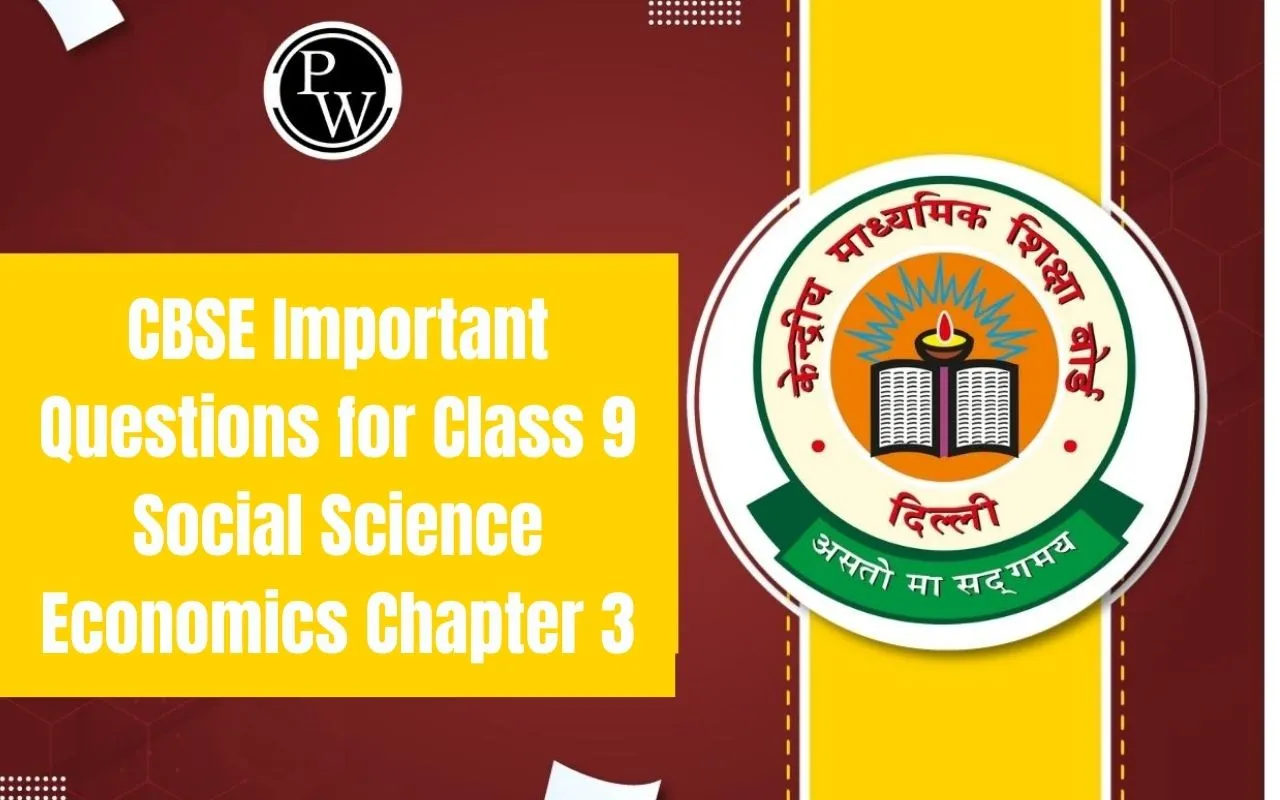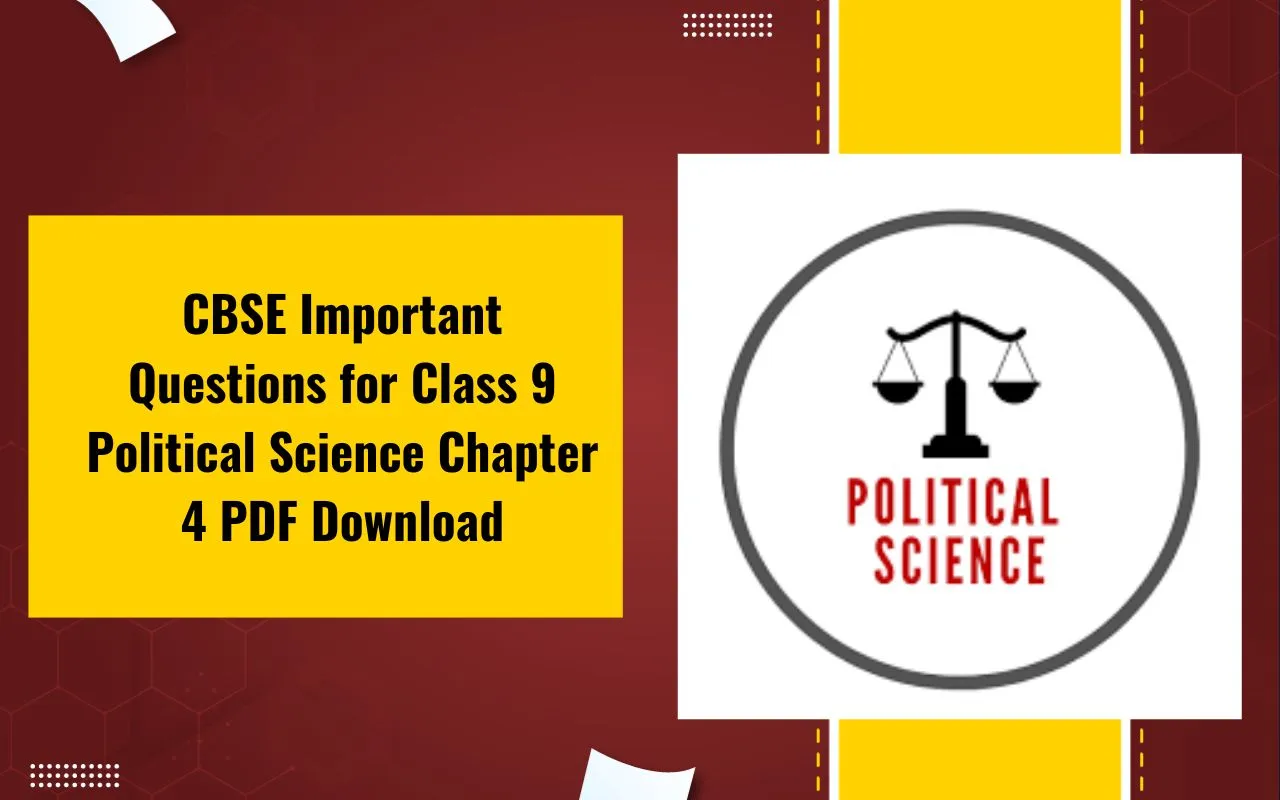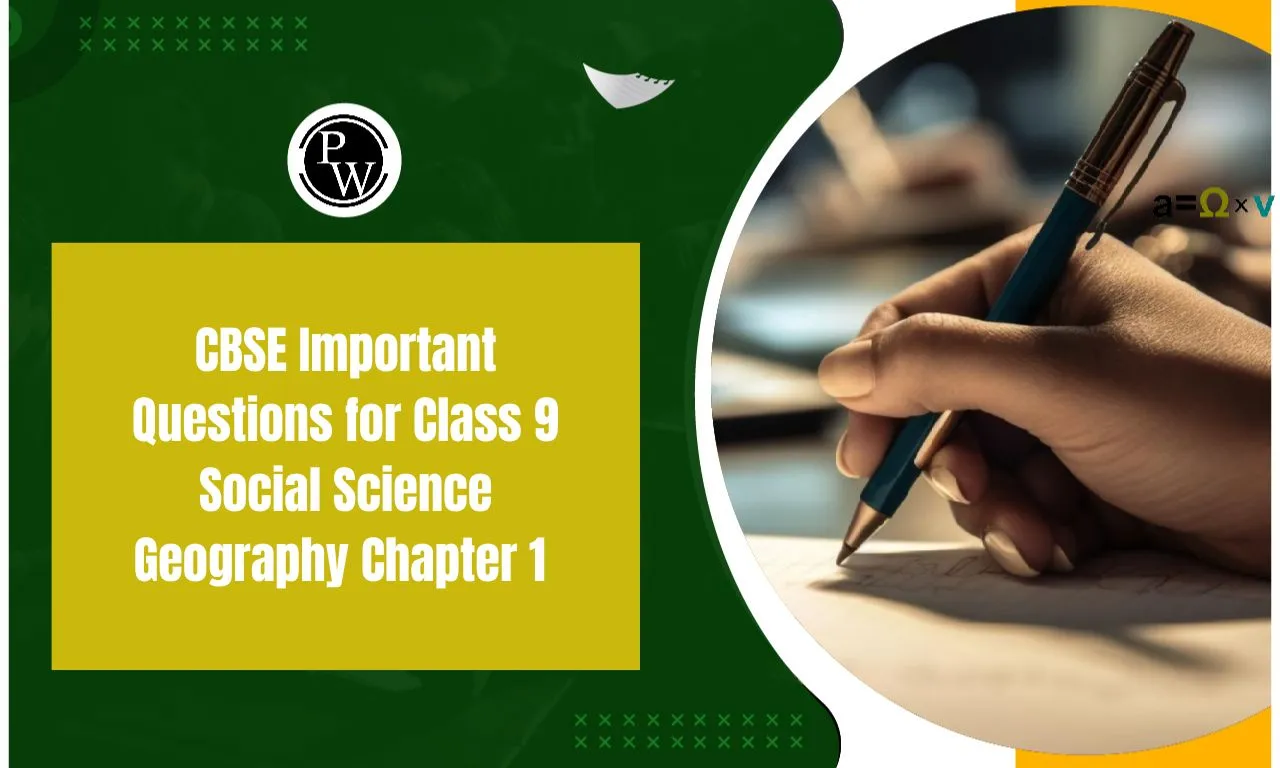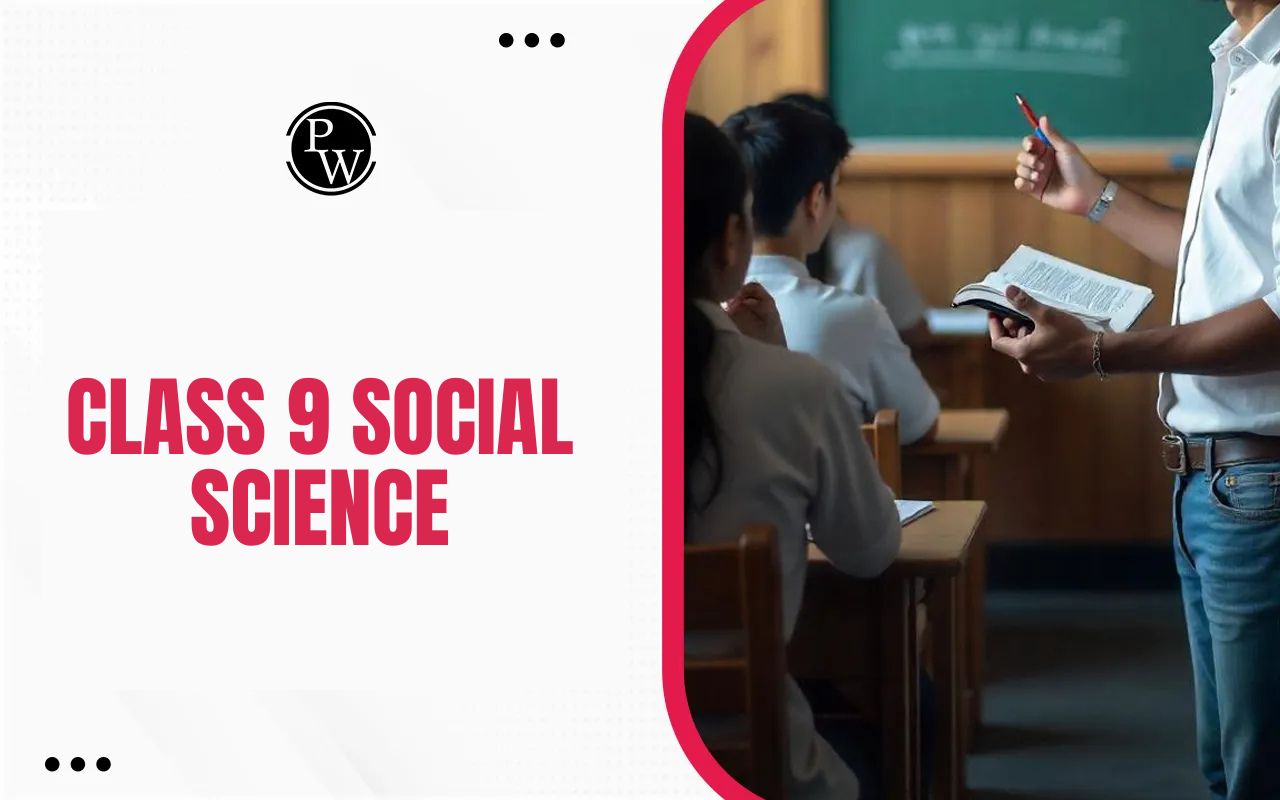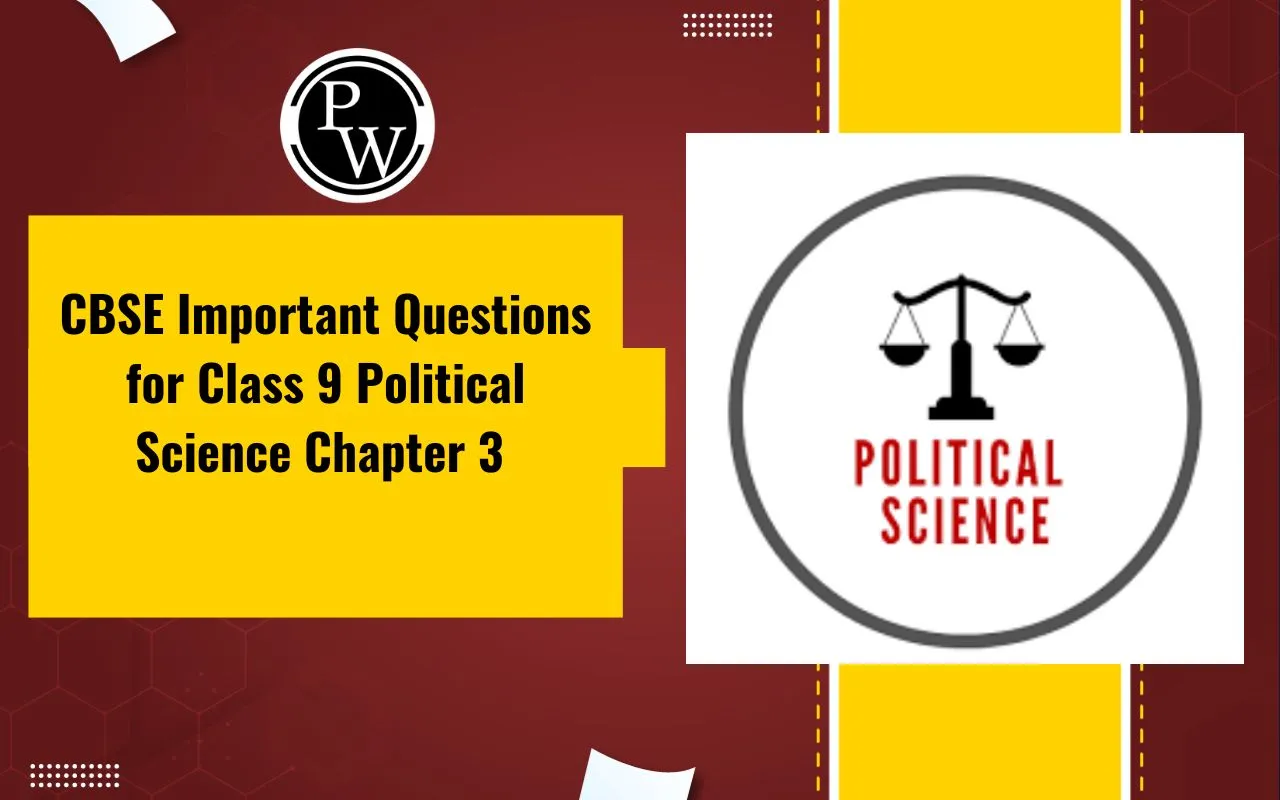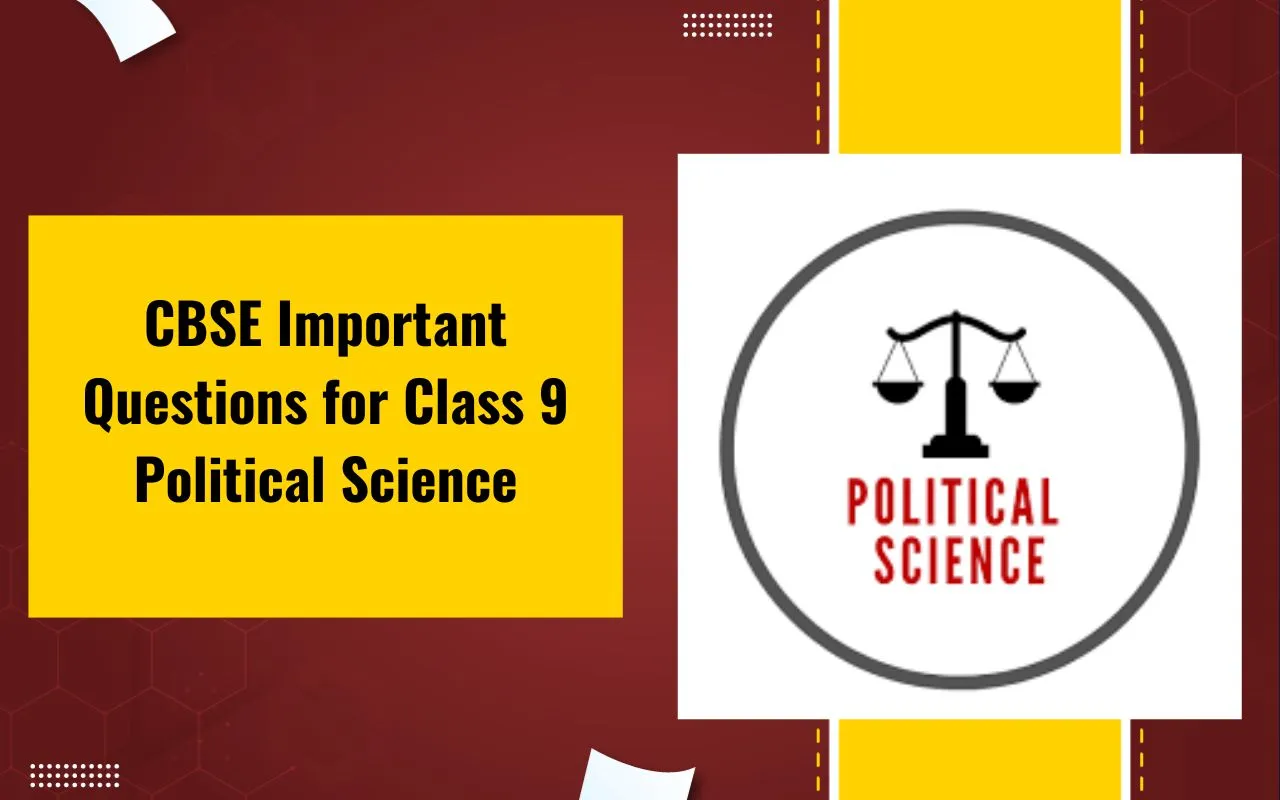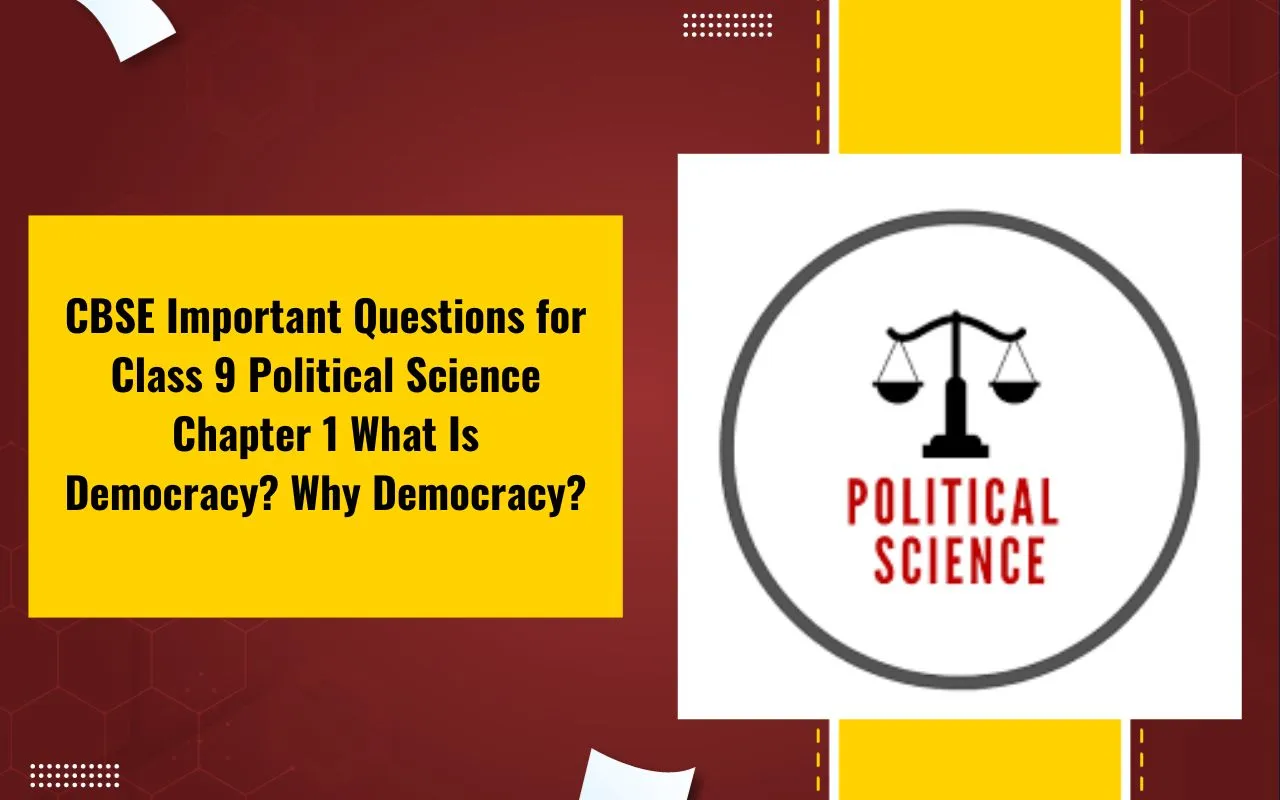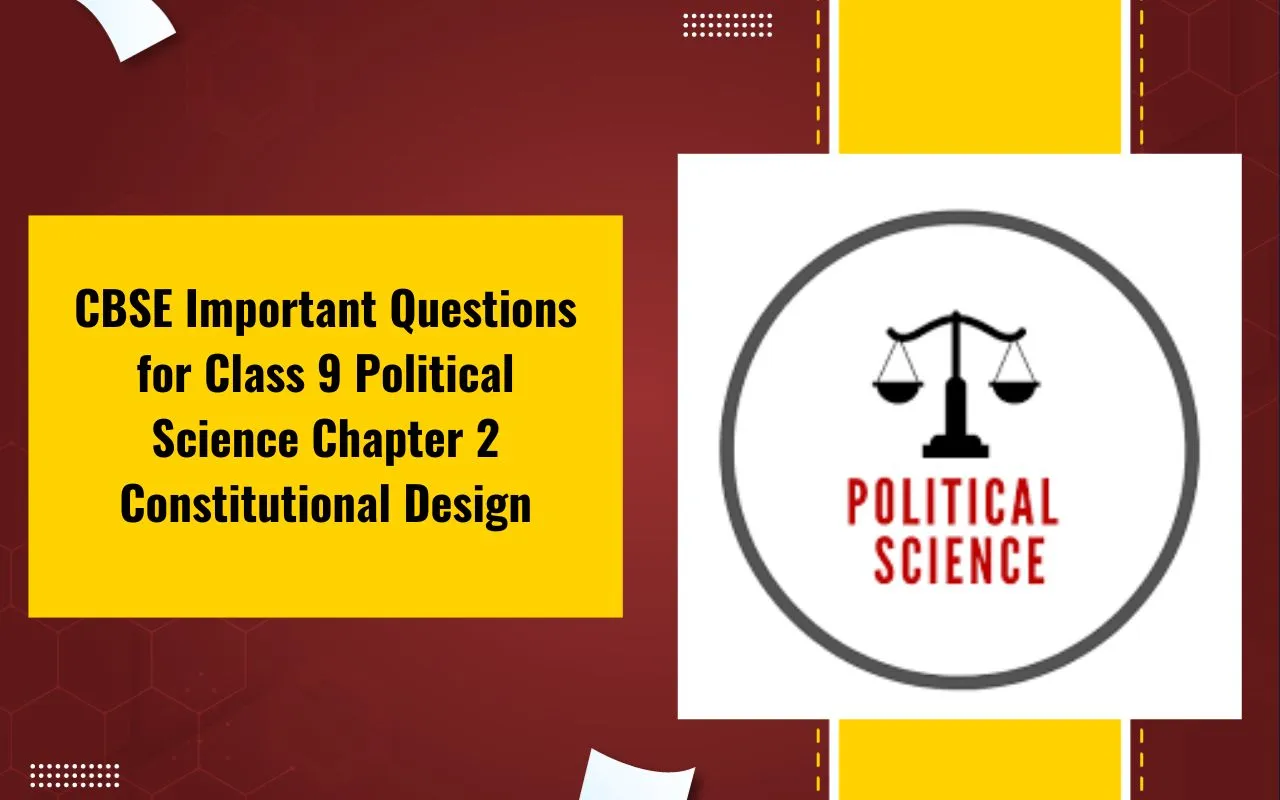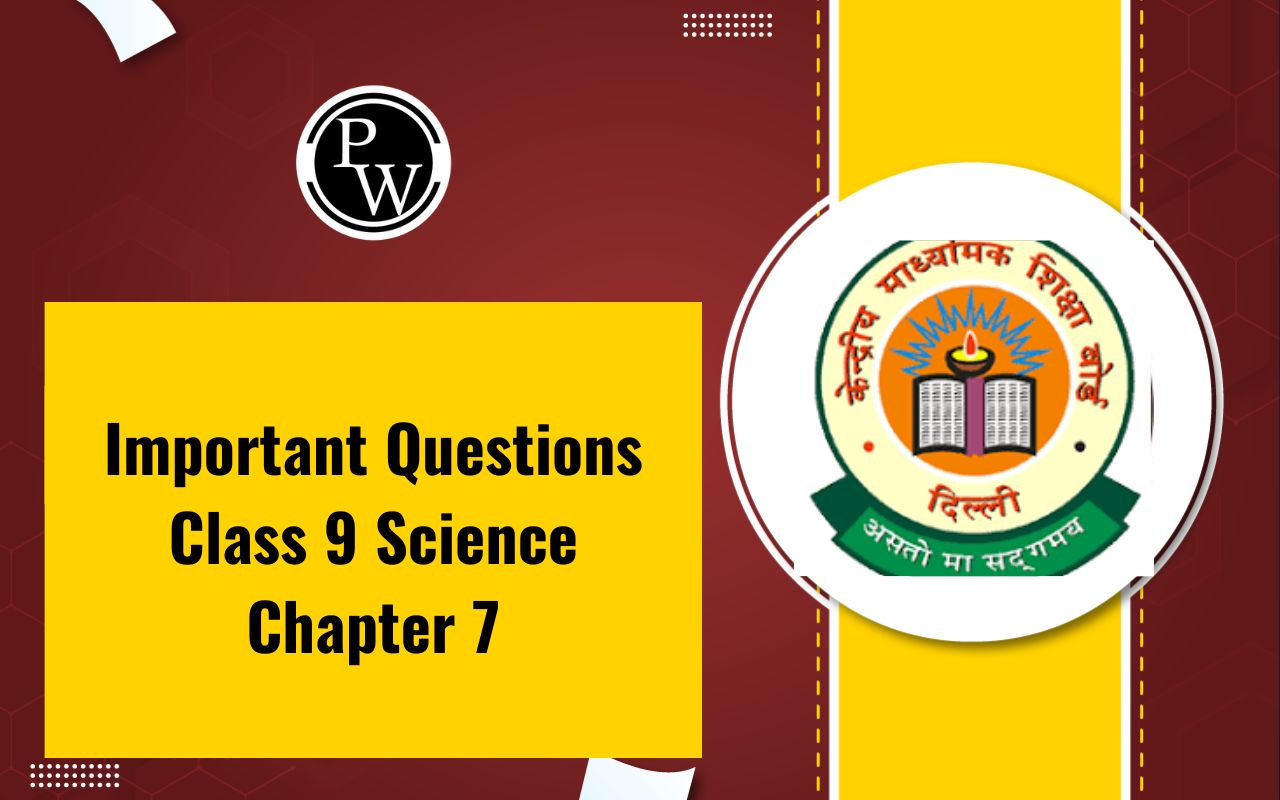
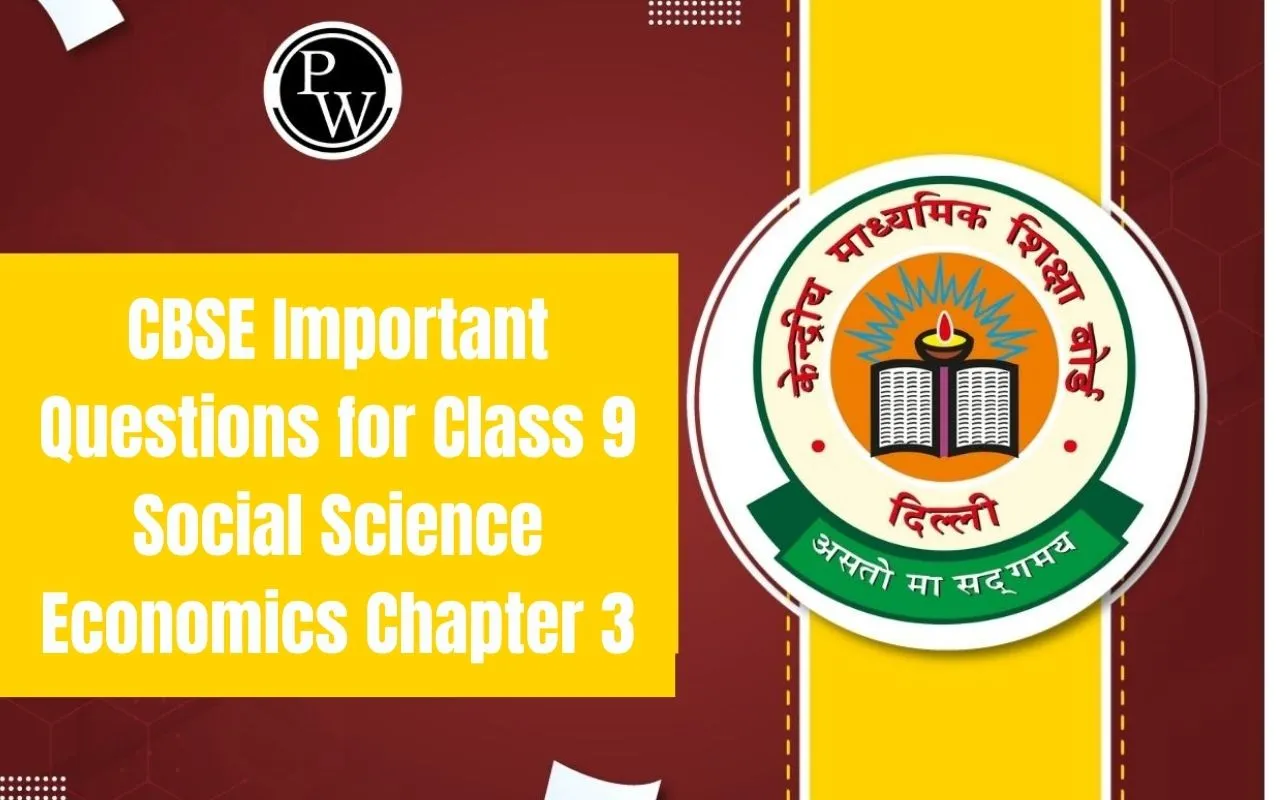
CBSE Important Questions for Class 9 Social Science Economics Chapter 3: Chapter 3 of Class 9 Social Science (Economics), Poverty as a Challenge, explores poverty in India, its causes, and government measures to reduce it. The chapter defines poverty through economic and social indicators like income level, nutrition, and access to education and healthcare. It examines factors contributing to poverty, including unemployment, illiteracy, and social discrimination.
Government programs such as the Public Distribution System (PDS) and rural employment schemes are also discussed. Key questions often focus on poverty trends, anti-poverty measures, and the role of economic growth in poverty reduction. Understanding these concepts helps students analyze real-world socio-economic challenges and policies.
CBSE Important Questions for Class 9 Social Science Economics Chapter 3 Overview
Chapter 3 of Class 9 Social Science (Economics), Poverty as a Challenge, discusses the causes, impact, and measures to reduce poverty in India. It highlights economic and social indicators of poverty, factors contributing to it, and government initiatives like PDS and employment schemes.
Understanding these concepts is crucial for analyzing socio-economic issues and government policies. Below, we have provided a PDF containing important questions for this chapter. These questions will help students grasp key topics, enhance their exam preparation, and develop a deeper understanding of how poverty affects national development and the measures taken to combat it.
CBSE Important Questions for Class 9 Social Science Economics Chapter 3 PDF
Chapter 3 of Class 9 Social Science (Economics), Poverty as a Challenge, explains the causes, impact, and measures to reduce poverty in India. It covers poverty indicators, factors contributing to poverty, and government initiatives like PDS and employment programs. Below, we have provided a PDF containing important questions for this chapter. These questions will help students understand key concepts, practice effectively, and prepare well for their exams.
CBSE Important Questions for Class 9 Social Science Economics Chapter 3 PDF
CBSE Important Questions for Class 9 Social Science Economics Chapter 3 Poverty as a Challenge
Below are the CBSE Important Questions for Class 9 Social Science Economics Chapter 3 Poverty as a Challenge -
1. _________ poor are the people who move in and out of poverty on a regular basis.
(A) Occasionally
(B) Chronic
(C) Churning
(D) None of the above
Ans. (C) Churning
2. Which of the following is a characteristic of people below the poverty line?
(A) Debt trap (B) Gender inequality
(C) Poor health (D) All of the above
Ans. (D) All of the above
3. Assertion (A): Poverty is a major challenge for economic development.
Reason (R): Poverty is associated with low levels of human development, poor health, and low
levels of productivity, which hinder economic growth.
(A) Both (A) and (R) are true and (R) is the correct explanation of (A).
(B) Both (A) and (R) are true but (R) is not the correct explanation of (A).
(C) (A) is correct but (R) is wrong.
(D) (A) is wrong but (R) is correct.
Ans. (A) Both (A) and (R) are true and (R) is the correct explanation of (A).
4. Which state in India has the highest povert rate?
(A) Odisha
(B) Jharkhand
(C) Bihar
(D) Chhattisgarh
Ans. (C) Bihar
5. Which of the following programs was initiated by the Government of India to improve the food and nutritional levels of the poor in the country?
(A) Mid-day meal scheme
(B) Integrated child development scheme
(C) Public distribution scheme
(D) All of the above
Ans. (D) All of the above
6. When the health of a person suffers due to deficiency of nutrients in food as per his daily
requirement, he/she is said to be the victim of ____.
Sol. Malnutrition
7. What helped West Bengal in reducing poverty?
Sol. Land reform measures
8. Who advocated that India would be truly independent only when the poorest of its people
become free of human suffering?
Sol. Mahatma Gandhi
9. When was the National Rural Employment Guarantee Act (NREGA) passed?
Sol. The National Rural Employment Guarantee Act (NREGA) was passed in September 2005.
10. Which social groups are more vulnerable to poverty?
Sol. Social groups which are most vulnerable to poverty are scheduled caste and scheduled tribe households.
11. What is the accepted average calorie requirement in India?
Sol. The accepted average calorie requirement in India is 2,400 calories per person per day in rural areas and 2,100 calories per person per day in urban areas.
12. Is it correct that poverty line may vary with time and place?
Sol. a) A person is considered poor if his or her income or consumption level falls below a
given “minimum level” necessary to fulfil the basic needs. What is necessary to satisfy basic needs is different at different times and in different countries.
b) Therefore, poverty line may vary with time and place. Each country uses an imaginary
line that is considered appropriate for its existing level of development and its accepted minimum social norms.
13. What are the major reasons for the less effectiveness of poverty alleviation programmes?
Sol. (i) It is due to lack of proper implementation and right targeting.
(ii) There also has been a lot of overlapping of schemes.
14. Write any two challenges ahead of India with respect to poverty alleviation?
Sol. (i) Wide disparities in poverty are visible between rural and urban areas and among different states.
(ii) Certain social and economic groups are more vulnerable to poverty.
15. What do you understand by human poverty?
Sol. Human poverty is a concept that goes beyond the limited view of poverty as lack of income. It refers to the denial of political, social and economic opportunities to an individual to
maintain a ‘reasonable’ standard of living. Illiteracy, lack of job opportunities, lack of access
to proper healthcare and sanitation, caste and gender discrimination etc. are all components of
human poverty.
16. Explain how the low level of education of the poor people can be held responsible for poverty in India.
Sol. a) Low level of education of the poor is a major cause behind their poverty. Poor people do
not have access to education.
b) Because of illiteracy, the Indian farmers have failed to learn new methods of cultivation.
Even the village moneylenders succeed in cheating them quite easily.
c) Moreover, poor parents are not able to send their children to schools. So, the poor people
are employed as unskilled workers and are paid low wages due to low level of education.
17. Explain the concept of measuring poverty through a poverty line. How does it work?
Sol. a) The poverty line is a common method employed by social scientists to measure
poverty is based on the income or consumption levels.
b) A person is considered poor if his or her income or consumption level falls below a
given “minimum level” necessary to fulfil basic needs.
c) In India, the poverty line is estimated by multiplying the prices of physical quantities
like food, clothing, footwear, fuel, light, education, etc. in rupees. The numbers
involved in determining the poverty line vary for different years. Also, the poverty line for
rural areas is different from that of the urban areas because the work, lifestyle and
expenses are different for rural and urban areas.
18. Discuss the various groups that are vulnerable to poverty.
Sol. The following groups are vulnerable to poverty :
(a) Social Groups: Social groups, which are most vulnerable to poverty, are Scheduled Caste
and Scheduled Tribe households. Although, the average for people below poverty line for
all groups in India is 22, 43 out of 100 people belonging to Scheduled Tribes are not able to meet their basic needs.
(b) Economic Groups: Among the economic groups, the most vulnerable groups are the
rural agricultural labour households and the urban casual labour households.
(c) Inequality of incomes within a family: There is also inequality of incomes within a family.
In poor families, all suffer, but some suffer more than others. In some cases, women,
elderly people and female infants are denied equal access to resources available to the
family.
Benefits of Using CBSE Important Questions for Class 9 Social Science Economics Chapter 3
Conceptual Clarity – Helps students understand key issues like poverty indicators, causes, and government measures to combat poverty.
Exam-Oriented Preparation – Focuses on frequently asked questions, improving chances of scoring well in exams.
Improved Analytical Skills – Encourages students to critically evaluate the impact of poverty and the effectiveness of government policies.
Better Time Management – Practicing these questions enhances speed and accuracy during exams.
Stronger Retention – Repeated exposure to important concepts helps in long-term memory retention.
Boosts Confidence – Familiarity with key questions reduces exam stress and enhances overall performance.
FAQ
What does poverty as a challenge cause?
What is the biggest challenge of poverty in India?
Why is poverty a great challenge?

